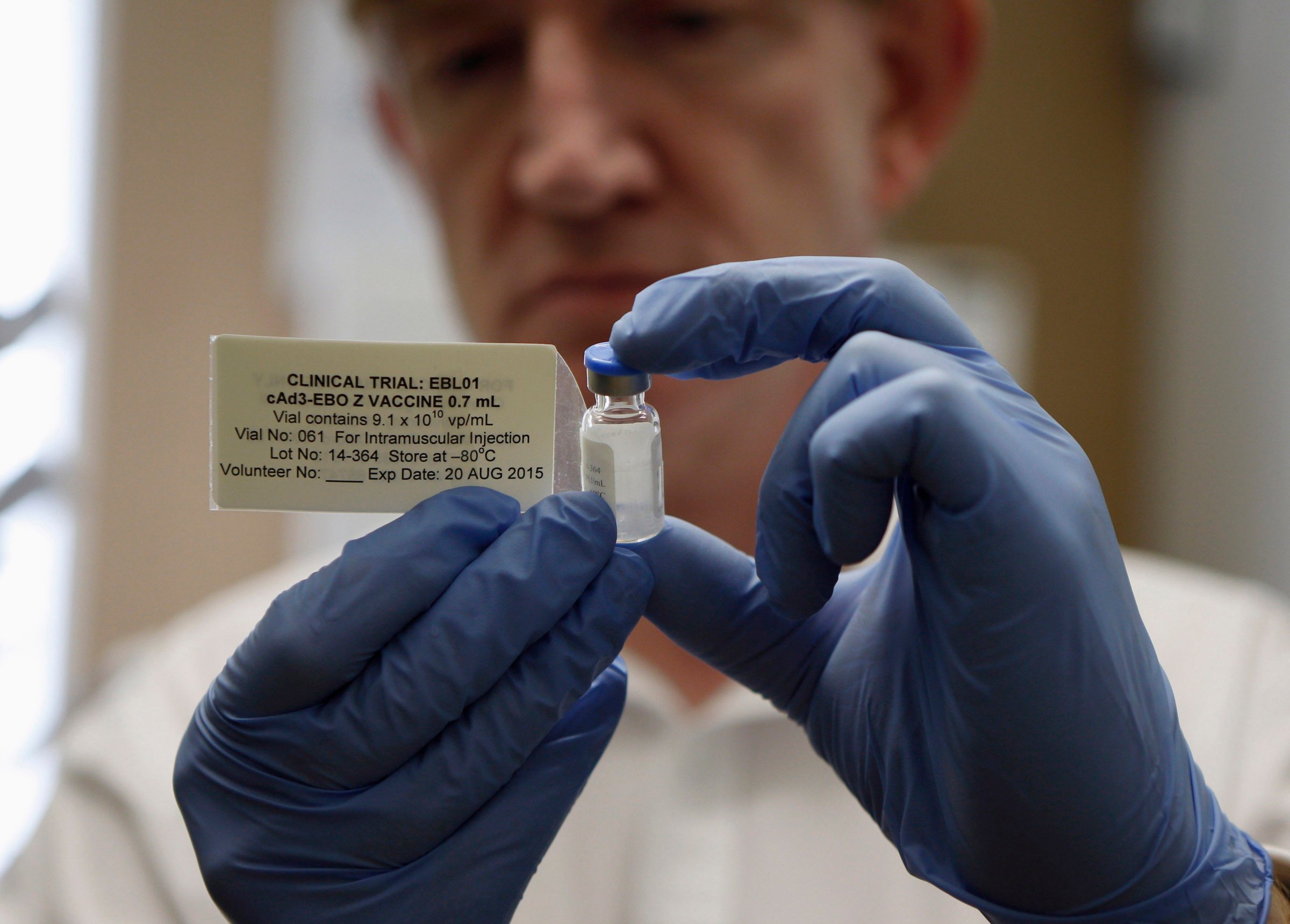
International experts want a fully tested and licensed Ebola vaccine scaled up for mass use in the near future, according to a recent World Health Organization (WHO) meeting.
WHO organized a panel of more than 70 experts, from scientists to medical ethicists, to reach consensus over the status of Ebola vaccines currently being tested. WHO released news from the meeting on Wednesday, the day after the U.S. confirmed its first patient with Ebola. According to the WHO statement, the mission is to “accomplish, within a matter of months, work that normally takes from two to four years, without compromising international standards for safety and efficacy.”
Two vaccines have great potential and are ready for safety testing. The first vaccine is developed by the U.S. National Institute of Allergy and Infectious Diseases (NIAID) and GlaxoSmithKline. That vaccine is currently undergoing a human-safety trial at the National Institutes of Health (NIH) campus in Bethesda, Md., as well as at the University of Oxford. The second vaccine is under development by the Public Health Agency of Canada in Winnepeg. That vaccine will start a human-safety trial in early October. Canada has already donated 800 vials of their vaccine to WHO, the organization says. Once more data is available on what dosing should be used, WHO says these vials could translate to around 1,500 to 2,000 doses of the vaccine.
The goal of the safety trials is to confirm that the vaccines are safe enough to move on to a larger human trial. Dr. Anthony Fauci, director of NIAID and the lead on the NIH vaccine, tells TIME the safety trial is so far “uneventful,” which is a good thing. “There really [are] no red flags so it seems to be going along quite well,” he says. The vaccine had already been tested in monkeys and showed very promising results.
WHO and other organizations have been expediting the testing and approval processes for these drugs since early summer, but the NIH’s vaccine has been under development since 2003. At the time, it did not have the pharmaceutical funding to move forward. “[In 2003] there was very little interest for the obvious reasons that there was no disease around,” says Fauci. “Recently, we now have a much more vigorous interest from pharmaceutical companies.”
WHO hopes that in October and November, the vaccines will make it through their safety trials and into next-stage human testing. Between January and February 2015, the goal is to have next-phase human trials approved and initiated in countries affected with Ebola. People at a higher risk for the disease, like health care workers, are a priority.
The meeting did not highlight ZMapp, the drug given to two American patients who were evacuated from Liberia to Emory University in Atlanta. Mapp Biopharmaceutical, the company that produces ZMapp, is a small team that says its resources are now exhausted. Their drug is grown in tobacco plants and requires waiting for a crop in order to produce more of it.
One of the ways trials could be quickened is if the researchers take a “wedge” approach, which means that a wedge or slice of the study population is selected for a first step in the trial, and what is learned in that step is then used on the next slice of the participants. While trials are ongoing, there are still significant technical obstacles that need to be addressed once a vaccine is ready for mass use: how vaccines will be distributed, for instance, and how low-resource health systems can ensure that vaccines are stored below –100 degrees.
In the WHO meeting, the phrase “Nothing can be allowed to delay this work” was repeated multiple times, and since Ebola has now infected more than 7,000 people and even made it to the U.S., the race to develop an effective vaccine is becoming all the more frantic.
More Must-Reads From TIME
- The 100 Most Influential People of 2024
- Coco Gauff Is Playing for Herself Now
- Scenes From Pro-Palestinian Encampments Across U.S. Universities
- 6 Compliments That Land Every Time
- If You're Dating Right Now , You're Brave: Column
- The AI That Could Heal a Divided Internet
- Fallout Is a Brilliant Model for the Future of Video Game Adaptations
- Want Weekly Recs on What to Watch, Read, and More? Sign Up for Worth Your Time
Contact us at letters@time.com